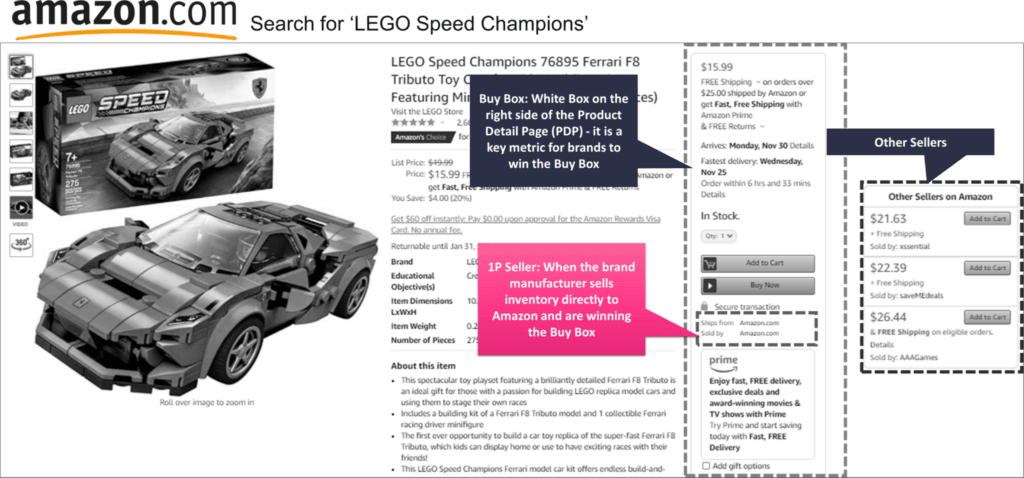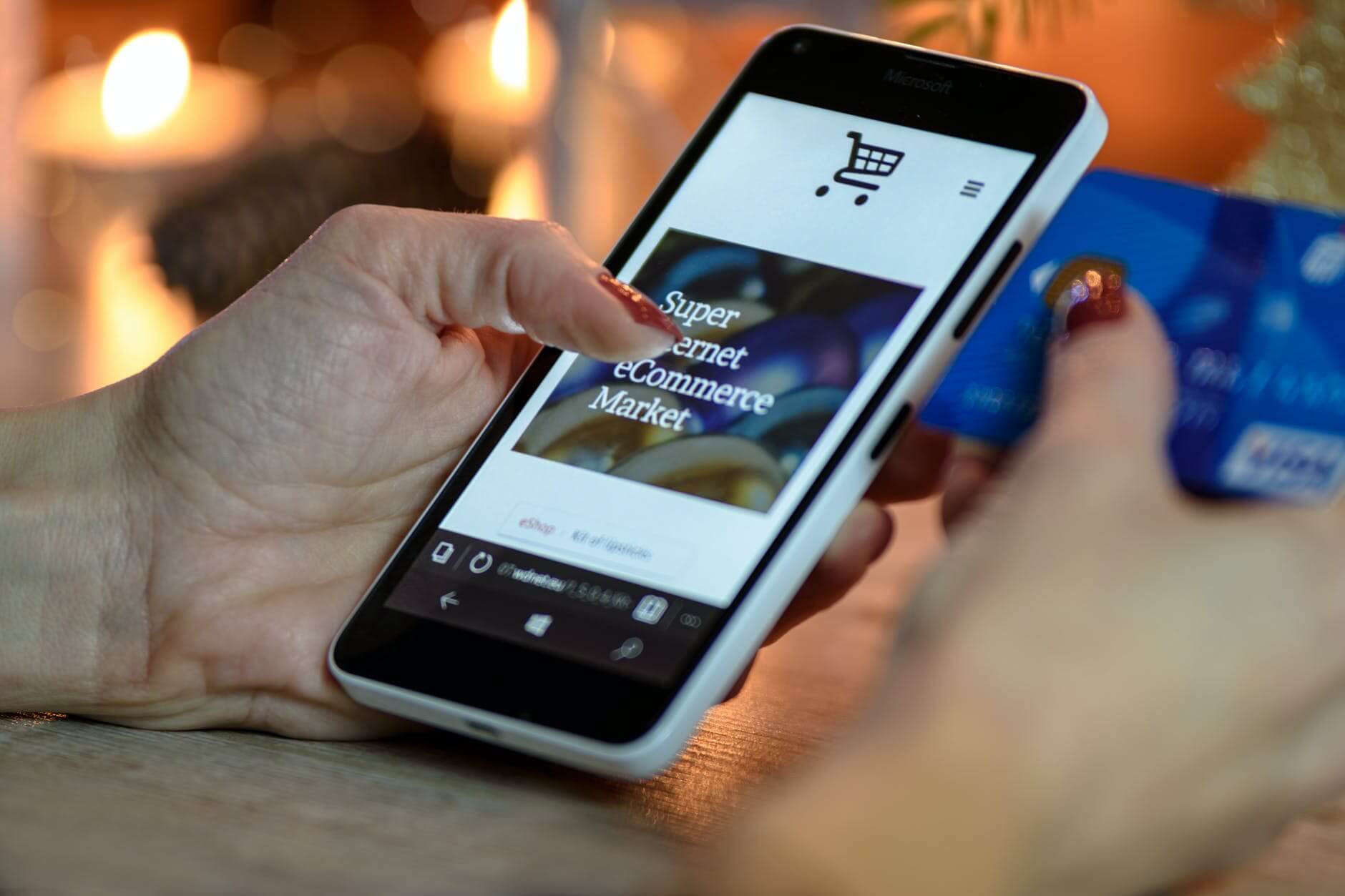In this blog post, I will be sharing amazon KPI a curated list of 50 Amazon terminology, glossary, and eCommerce KPI in general, to help you get up to speed.
Seattle-based Amazon.com is one of the Big Five companies in the U.S. information technology industry and usual suspects like Google, Apple, Microsoft, and Facebook. It is arguably the world’s most valuable brand and continues to experience tremendous growth even during the pandemic. Brands are poised to win BIG leveraging this unprecedented platform – a fact corroborated by record Amazon Prime Day 2020 sales of $10.4 billion, which was up 45% over 2019.
I would be glad to read your comments and thoughts on Amazon KPI or another eCommerce glossary that you find useful!

AMAZON KPI GLOSSARY OF TERMS:
- 1P Seller: A 1P relationship means Amazon acts as the retailer, and manufacturers operate as a wholesale supplier to Amazon.
- 3P – Third-party seller: A business that sells a product that is not their own brand or product.
- A9 Search Engine: Amazon’s proprietary search engine and search advertising technology. A9 powers Amazon’s product search pages.
- Abandoned Cart: This happens when a shopper adds an item to the cart but leaves without making a purchase.
- Above The Fold: The space on a web page that users see without having to scroll. Brands should strive to catch the shopper’s attention by presenting a unique brand story.
- Amazon A+ Content: The A+ Content helps the brand stand out by including a unique brand story, hi-fidelity video, images, and enhanced UX.
- Livestream: Amazon Live is a Home Shopping Network styled Livestream video that allows sellers and brand owners to host a video on the Amazon marketplace promoting product ‘Discovery’ and engagement.
- Ad Impression: Impressions tell you how many times a product’s ad is displayed.
- Advertising cost of sales – ACoS: is the ratio of ad spend to targeted sales.
- ASIN– AMAZON STANDARD IDENTIFICATION NUMBER: Amazon gives a 10 digit alphanumeric unique ASIN (e.g., X123456789) to all products. Simply put, this is Amazon’s way of distinguishing the products – similar to a UPC. This allows Amazon to determine and separate products.
- Andon Cord – Based on significant issues like quality, safety or misleading info, etc., an Amazon support agent can immediately pull a product from buyable status. Andon Cord is a quality term that originates from the Toyota factories in Japan.
(Check Example) - Average CTR: The percentage of users on a page who click on a link.
- Best Seller Badge: A small, orange mark showing the best selling product within a category. Helps generate more clicks and conversions.
Amazon Prime Day 2021 – HISTORY, FACTS, TRENDS & STATS
- Bounce Rate: The bounce rate tells you how many users exit your site after viewing only one page.
- Best Sellers Rank – This is the Amazon category rank for a product based on how well it sells.
- Bundling: It is a concept of selling two or more products together instead of a single one.
- Buy Box: Amazon’s Buy Box incorporates the large “Add to Cart” and “Buy Now” buttons on the product details page. Winning Buy Box is significant for sellers, as it is responsible for most sales (fact: 82% of sales on Amazon go through the Buy Box).
- Churn Rate: The % of shoppers who cut ties with the company or unsubscribe at the selected time.
- CTR– Click Through Rate: The percent of shoppers who see your ad and click on it. You can calculate CTR when you divide total clicks by total impressions.
- Conversion Rate: it is the percentage rate at which shoppers are purchasing a product.
- COGS– Cost of Goods Sold: The accumulated total of all costs used to create a product (or service) sold.
- CPC– Cost Per Click: An advertising method that refers to the actual price you pay each time a customer clicks on your ad.
- CRAP – Can’t Realize a Profit. Amazon algorithms might deem a product as CRAP- meaning the product will not realize into a profit from sale: Shipping costs, inventory, pricing, etc., can be the root cause.
- Cross-Selling: Cross-selling is a technique to make your customers spend more by making them buy a product that’s complementary to what he has bought already. E.g., Shoppers buying Butter can be nudged to buy milk or bread as they are complementary products.
- Drop-shipping: It is a way of selling goods without keeping physical inventory. Shoppers can order the product from an online store or store kiosks, and upon receipt of the order, a drop shipper will fulfill the order by sending the products to the customer directly.

- Early Reviewer Program – An Amazon program that incentivizes customers who have purchased a product to leave an honest review.
- FBM: Fulfilled by Merchant refers to shipping products directly to the end customer yourself.
- FBA: Fulfillment by Amazon means manufacturers send their product into the Amazon warehouse, and they pack and ship the product when a sale is made.
- Goldbox – It is Amazon’s landing page containing Deal of the Day, Lightning Deals, and a selection of best promotions and savings by categories.
- Lightning Deals: Time-sensitive Amazon deals are available for shoppers. Sellers decide the discounts and time duration.
- Livestream: Amazon Live allows sellers and brand owners to host a Livestream video on the Amazon marketplace.
 (Source: Amazon.com)
(Source: Amazon.com) - Longtail Keywords: Keywords that are used to target niche demographics rather than mass audiences.
- Negative Keywords: Negative keywords are the search terms that you don’t want your listing or ad to appear on when running a PPC advertising campaign.
- PPC- PAY-PER-CLICK: This term is applied to Amazon Advertising. Brands are charged each time their Sponsored Product, Sponsored Brand, or Product Display ad is clicked.
- Display Ads: These ads are shown on the top, sides, and bottom of the search results page.
- Ratings: On Amazon, each product is rated by customers out of five stars. Typically rating of 4+ stars sells the best!
- RoAS – Return On Ad Spend. Used to determine the effectiveness of an ad campaign. Helps to understand how many dollars are earned for each dollar of ad spend.
- SERP: Search Engine Result Pages, pages displayed by any search engine in response to a keyword search.
- Seller Central: Seller Central is Amazon’s home base for its selling community.
- Site traffic: Site traffic refers to the total number of visits to your eCommerce site.
- Sponsored Brands: Previously called as Headline Search Ads, this Amazon Advertising option is currently only available to sellers enrolled in Amazon Brand Registry.
- Sponsored Products: This is the most popular type of Amazon Advertising. Brands’ product listing appears on the product search results page before non-sponsored listings.
- Top of the funnel Keywords: These short keywords are broad searches for primary products. These terms receive large search volume estimates; however, they are highly competitive and pull in many products. Eg: A generic search for ‘Hair Shampoo’ will result in many products.
- Traffic source: This performance indicator tells where the shoppers are coming from or how they found the site via organic search, paid ads, or even social media.
- Unverified Review – A product review from someone who may or may not has actually purchased the item.
- Up-Selling: A technique to convince a customer to buy something more expensive, i.e., an upgraded type of what’s being purchased. E.g., Upgrade to a 4K Television instead of an HD version
- Verified Review – A review obtained from a genuine purchaser of the product in question.
- Vine – An Amazon program in which vendors or sellers can enroll their products to obtain verified, legitimate reviews.
- Warehouse Deals – Sold by Amazon Warehouse, a business of Amazon that sells quality “used” products.
- White Labeling: a product involves purchasing the item from a manufacturer but applying your own brand.


Comments are closed.